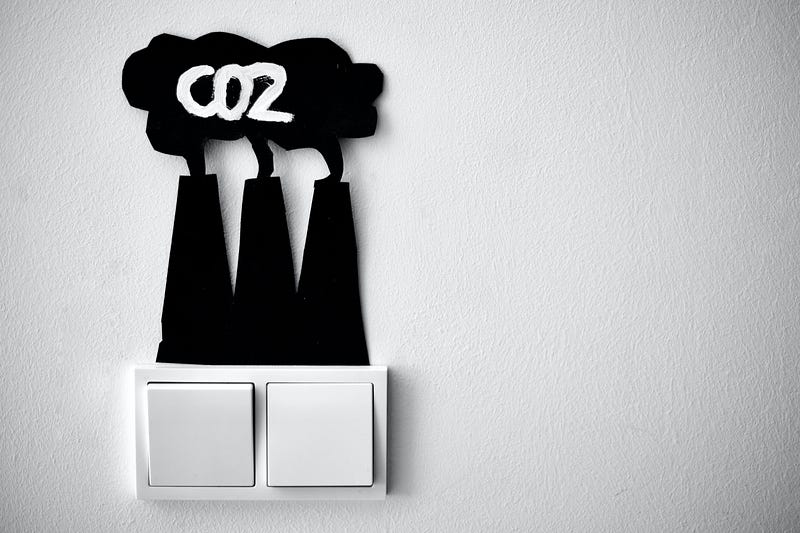
Carbon dioxide is a major greenhouse gas that contributes to global warming. To address the challenges of climate change, it is crucial to capture and reduce CO2 emissions. Carbon capture and utilization technologies play a vital role in this effort by capturing CO2 from various sources, including industrial processes and power plants, and converting it into valuable products, thereby reducing greenhouse gas emissions and creating economic opportunities.
Carbon Capture and Utilization (CCU)
Carbon capture and utilization involves the capture of CO2 from industrial emissions, ambient air, or power plants, followed by its conversion into useful products. This approach not only helps in reducing CO2 levels but also offers opportunities to transform a greenhouse gas into a valuable resource, fostering a circular economy.
Direct Air Capture (DAC)
Direct air capture (DAC) is a method of capturing CO2 directly from the ambient air. It involves the use of specialized technologies that absorb and concentrate CO2, which can then be stored or utilized. DAC offers the advantage of capturing CO2 from diffuse sources, making it applicable in various locations and enabling the reduction of atmospheric CO2 concentrations.
Carbon Capture from Industrial Processes
Industrial processes account for a significant portion of global CO2 emissions. Carbon capture technologies can be integrated into these processes to capture CO2 before it is released into the atmosphere. The captured CO2 can be compressed, transported, and either stored underground or utilized in other applications.
Carbon Capture from Power Plants
Power plants, particularly those fueled by fossil fuels, are major contributors to CO2 emissions. Carbon capture systems can be installed in power plants to capture the emitted CO2 before it is released. The captured CO2 can then be transported via pipelines and either stored underground or utilized in various industrial processes.
Carbon Utilization in Building Materials
Captured CO2 can be converted into building materials, such as concrete or aggregates. CO2 is chemically bound to create durable and sustainable construction materials, thereby reducing the carbon footprint of the construction industry. Carbon utilization in building materials provides a dual benefit of reducing CO2 emissions and creating greener construction practices.
Carbon Utilization in Fuels and Chemicals
CO2 can be converted into fuels and chemicals through various processes, such as carbonation or electrolysis. For example, CO2 can be converted into methane or methanol, which can serve as alternative fuels. Additionally, CO2 can be used as a feedstock for the production of chemicals, such as polymers or fertilizers. Carbon utilization in fuels and chemicals provides a way to reduce dependence on fossil fuels and create a sustainable feedstock.
Conclusion
Capturing and utilizing carbon dioxide is a crucial step in mitigating greenhouse gas emissions and addressing climate change. Carbon capture and utilization technologies offer innovative ways to reduce CO2 levels while simultaneously creating valuable resources. Whether through direct air capture, carbon capture from industrial processes and power plants, or carbon utilization in building materials, fuels, and chemicals, these approaches contribute to a more sustainable and circular economy. Continued research, development, and implementation of these technologies are essential to accelerate the transition to a low-carbon future.
Frequently Asked Questions (FAQs)
FAQ 1: What is carbon capture and utilization (CCU)?
Carbon capture and utilization (CCU) refers to the process of capturing carbon dioxide from various sources and converting it into valuable products. It helps in reducing CO2 emissions and creating economic opportunities.
FAQ 2: How does direct air capture (DAC) work?
Direct air capture (DAC) involves capturing carbon dioxide directly from the ambient air using specialized technologies. These technologies absorb and concentrate CO2, which can then be stored or utilized.
FAQ 3: Can carbon capture be applied to industrial processes?
Yes, carbon capture technologies can be integrated into industrial processes to capture CO2 before it is released into the atmosphere. The captured CO2 can be stored or used in various applications.
FAQ 4: What are some examples of carbon utilization?
Carbon utilization involves converting captured CO2 into useful products. Examples include using CO2 to produce building materials, such as concrete, or converting it into fuels and chemicals like methane or methanol.
FAQ 5: How can carbon capture and utilization contribute to climate change mitigation?
Carbon capture and utilization help in reducing CO2 emissions by capturing carbon dioxide from various sources. By converting CO2 into valuable products, it fosters a circular economy and reduces the reliance on fossil fuels, contributing to climate change mitigation efforts.

No comments:
Post a Comment